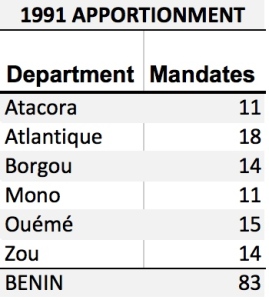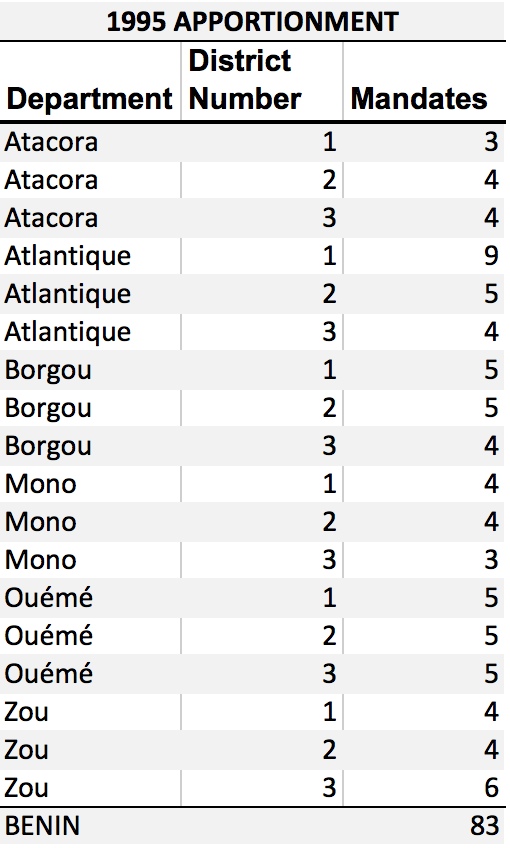Benin utilizes the largest remainder system of proportional representation with a Hare quota to allocate the 83 seats in the National Assembly (Assemblee nationale) off of closed lists within constituencies. The Hare quota equals the total number of valid votes in a constituency divided by the number of mandates in the constituency. Seats are awarded for multiples of full Hare quotas with any leftover seats given out to parties in descending order of remainder votes (i.e. votes not used towards a full Hare quota and seat). Apparentement between lists does not appear to be permitted, though parties can form alliances with a single list.
The number and magnitude of constituencies has changed over time and accounts for the difference between Beninese electoral systems.
BENIN 1 (1991)
At the time of the 1991 elections, the 6 departments served as constituencies. The following table presents the apportionment of seats:
 BENIN 2 (1995)
BENIN 2 (1995)
For 1995, the 6 departments were each divided into 3 electoral districts for a total of 18 constituencies.The following table presents the apportionment of seats:
BENIN 3 (1999-)
Before the 1999 elections, the number of departments doubled from 6 to 12. Each new department was split into 2 electoral districts for a total of 24 constituencies. The following table presents the apportionment of seats:


